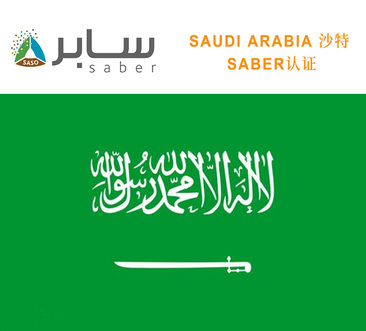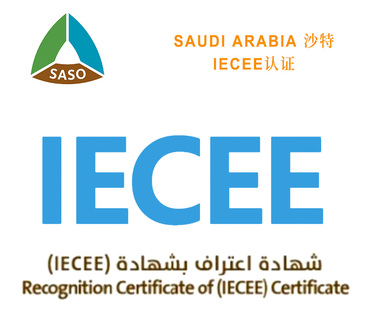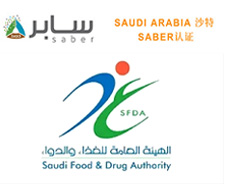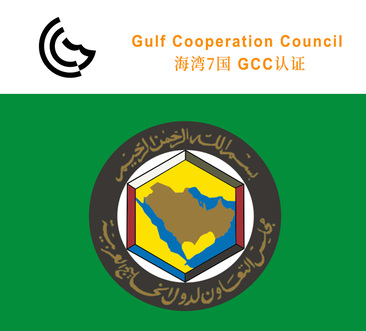News
-
MORE
202403-06
CE certification fees and related expenses for electric mosquito coils 1Usually, when it comes to the CE certification of electric mosquito repellent liquid, companies pay attention to the cost. How much does the CE certification cost? The cost of CE certification is about 2-3k, and different quotations are provided for different products. The cost of medical machinery and equipment product certification is relatively high, and the specific quotation is provided by the official customer of Sage to answer any difficult questions one-on-one.Electric mosquito repellent liquid is mainly a chemical component of pyrethroids, and a small amount of chloroform, benzene, ether, etc. are also added as solvents. These chemical components can be absorbed through the respiratory and digestive tracts and have certain toxicity. If exposed to excessive amounts for a long time, there will be serious consequences. Some low-quality mosquito repellents contain drugs that are extremely harmful to human health, such as commonly used pesticides such as dichlorvos.Electric liquid mosquito repellent incense, like electric paper mosquito repellent incense, is composed of mosquito repellent liquid and an electric heater. When the electric heater is connected to the power supply, the PTCR element starts to heat up, and then relies on the temperature adjustment function of the PTCR element itself to maintain its temperature within a certain range. The above description can also help us understand this process. It is necessary to obtain CE certification for products exported to other countries in order to protect the environment and the health of consumers.
-
MORE
202403-06
Perform Bluetooth CE-RED certification process What are the processes required for Bluetooth CE-RED certification? RED certification is one of the mandatory CE certification modes for wireless products in EU countries. As long as the product has wireless transmission frequency, such as wireless speakers, wireless doorbells, headphones, Bluetooth devices, WIFI devices, alarm devices, wireless phones, and transmission equipment computers, they all need to apply for RED certification.What exactly is RED? Everyone knows CE, and RED is a directive in CE certification. Any wireless product entering the EU market must undergo RED certification, which is more complex than ordinary products. Ordinary CE only has two reports, LVD and EMC, while wireless device products have four reports for CE certification. The process of applying for RED varies depending on the product frequency band and classification. For low-frequency wireless products, we usually refer to frequencies such as 49MHz, 40MHz, 33MHz, 315MHz, 88-108MHz, 35MHz, etc. These frequencies are used differently in different countries. For wireless products, we usually encounter product applications such as FCC and REDBluetooth CE-RED certification process: The customer provides complete test samples and accessories, and submits them to our Sage company. The customer provides a complete technical material circuit diagram, BOM, product certificate, etc., and the document should be in English. The Sage laboratory will test the product and issue a report; Provide CE-RED certification reports for laboratory audit data. If you encounter any difficulties in obtaining CE-RED certification for wireless products, you can contact us for assistance. Our specialist will provide one-on-one service to you with over ten years of industry experience, providing you with more convenient and high-quality services.
-
MORE
202403-06
Iraq COC processing process and required materials The COC certification in Iraq is a certification for exporting controlled goods to Iraq. In October, Iraq issued new regulations to implement control over products that are needed, indicating that the import of goods is becoming increasingly strict. Generally, COC certification for exporting to other countries requires the issuance of certification by six authorized institutions in the country. Sample testing is conducted by the testing agency itself, with a validity period of one year. The application is first submitted, and a packing list is required to be submitted at the time of inspection. The inspection teacher checks the quantity, The goods are neatly arranged and passed in one go. If the inspector fails to meet the inspection requirements within 1 hour of arrival, the inspector has the right to refuse the inspection. If there is a need to charge travel and inspection fees in the next inspection arrangement, it will not be worth the loss. This fee is charged by the organization, not the inspection company. Whether the goods pass the COC certification in Iraq is determined by the inspection teacher.The main method of inspection is to verify the product, quantity, packaging, labeling, and whether there is a label made in China. The name of the goods must match the packing list, and there must be no defective products, rust stains, or attachments. The products must be clean and hygienic, and the goods must be opened and checked to prevent smuggling. During the inspection, the quantity of each model and product should be consistent with the application form and packing list, The final shipment quantity cannot exceed the inspection quantity. The inspector will verify the quantity of each model and product on site and record it in the inspection report. The final certificate will refer to the quantity and weight on the inspection report. After all goods pass the inspection, the packing list and formal invoice will be submitted. Two working days later, the Iraq COC certification will be issued. The processing period for Iraq COC certification is about 11 days, and it can be expedited.The application for COC certification in Iraq requires the following materials:1. Iraq COC Certification Application Form: The template for the application form will be provided by the testing company, mainly filling in the relevant information of the goods, product name, exporter, contact person, phone number, inspection address, HS code, etc. In the exported product name, the goods can be classified, for example, if they are in the same category, additional fees will be charged if they are not in the same category.2. Packing list3. Formal invoice4. Testing report or product photos
-
MORE
202403-06
Iraq CoC/VoC certification control products Recently, with the implementation of COC policies by Kurds in northern Iraq, there have been many inquiries about COC/VOC in Iraq. I would like to share with you the following common questions: Iraq COC and Iraq VOC both refer to the "conformity assessment certificate" of products, which is used for customs clearance of destination port importers and is a mandatory certification designated by the government. Compliance verification COC and VOC refer to the same certificate, but their names are different. The full English name of COC is Certificate of Conformity, which meets the import standards of IraqWhat products need to be COC exported to Iraq? The products that require COC mainly include the following categories: toys; Electronic devices; Cars, tires, and components; Construction products; Cosmetics and personal hygiene products; Kitchenware; Daily hardware; Chemicals; Textiles and footwear, etc.If it is verified that the product belongs to the non regulatory scope, it is not mandatory to apply for a CoC certificate. To apply for inspection, only the inspection report, invoice, and other declaration materials of the controlled product need to be provided. When packaging products, please separate controlled and uncontrolled products for smooth inspection.What is the validity period of the CoC certificate? CoC is a batch certificate that is only valid for the current batch of goods. The validity period of the inspection report is two months. If it exceeds two months, a re examination will be arranged.What if there are no relevant testing standards in the laboratory for products under the control of Iraqi Kurds? Please provide the English name of the product (preferably the English name on the invoice when applying), customs code, and product image for our confirmation. If the destination of the goods is Kurdistan, Iraq, and the customer insists on manufacturing COC, uncontrolled products can accept voluntary applications.
-
MORE
202403-06
Export Kuwait Certification Requirements and Required Materials Today, I would like to introduce Kuwait certification to you. As a small country in the Middle East, Kuwait can be said to be quite developed. Today, we will learn about Kuwait certification. In order to better protect the rights and interests of local people, the petroleum products produced here must undergo some certification so that they can be sold in the market. The most commonly used currently are two types of certification, the first being official agency certification, and the second being provided by suppliers. What is the difference between these two types of certifications, as they require documents and information provided by the company? Official agency certification requires the provision of documents and information (specific details can be consulted). SDO STANDARDS OF COMMERCIAL COMPANIES require the company to provide product names, product models, product quantities, etc., just like official agency certifications, they all require the company to provide documents and information. SDO STANDARD OF CERTIFICATE is a certification provided by the supplier.This type of product has the following characteristics:1. The product has been tested by official institutions;2. The product has a clear test report;3. The product must be packaged and labeled;4. Only after passing the test can it be sold in the market.During customs clearance in Kuwait, it is necessary to provide:1. Product application form2. Product manual3. Product photos4. Technical parameters and indicators5. Products exported to Kuwait must obtain a CE certificate6. The above certifications are mandatory requirements.
-
MORE
202403-06
Materials for COC certification application in Kuwait Mandatory products exported to Kuwait must provide a technical inspection report. For each batch of goods exported to Kuwait, a COC customs clearance permit document must be submitted. If the quantity of products in the control catalog is large and the shipment is frequent, it is recommended to apply for a COC certificate in advance. To apply for COC, the following information needs to be prepared: Product testing report: This report needs to be issued by a qualified third-party testing agency. If there is a valid testing report, separate testing is not required. Fill in the application form with product, images, and technical parameters: The blank application form is provided by the processing agency, and the above information can be submitted to the official designated agency.To apply for COC certification in Kuwait, you need to prepare the following information:1. Packing list2. Formal invoice3. Product testing report: issued by a qualified third-party testing agency. If there is a valid test report, there is no need for separate testing4. COC application form: The blank application form is provided by the processing agency, and in addition to the above information, cargo inspection should also be arranged. The following are Kuwait's inspection requirements: products, inner packaging, and outer packaging must have a "Made in China" origin label. Meanwhile, "Made in China" must be engraved and indelible;, Do not accept stickers.Each product and packaging must have:1. The product manual must have an Arabic manual2. Mandatory frequency requirement: 50Hz; Applicable voltage: 230V, 240V3. Special requirements for plugs and sockets: They must be British triangular plugs and sockets4. Electronic and electrical products need to display voltage and frequency on the product label
-
MORE
202403-06
How to apply for Saudi SABER certification and certification techniques for household appliances How to apply for SABER certification in Saudi Arabia for household appliances? When I looked at this question, I felt that it was too broad because there were too many household appliances. Different household appliances have different certification requirements, especially Saudi Arabia has 7 mandatory certifications, all aimed at different products. Accidentally, there will be new certification requirements. So when doing SABER certification for household appliances, it is important to know what product it is because the scope of household appliances is too broad. SABER certification for household appliances, SABER certification for small appliances, and SABER certification for electronic appliances can all be considered as SABER certification for household appliances. To our knowledge, there are three different certification requirements for the regulatory categories of household appliances. For example, refrigerators, freezers, air conditioners, washing machines, disinfection cabinets, and dryers all require energy efficiency certification, and many household appliances also require GCC certification before undergoing SABER certification.If we do this, it will cost 70000 to 80000 yuan. To be honest, few companies can afford it. Unless it is a large enterprise, it is possible to invest in advance. Otherwise, it's really not cost-effective. For example, some foreign trade companies require him to do energy efficiency certification and GCC certification, which may be difficult to earn back the cost. The investment is too high because doing GCC certification and energy efficiency certification requires so much money, both are the same model. If there are many models, it would be troublesome because different shapes, powers, and main components cannot be included in a testing report. Therefore, applying for a GCC certificate or energy efficiency certificate cannot help you understand. Making a certificate for one model will not exceed one model, and the certificate fee will not exceed one.Once the household appliances are confirmed, you can apply for the next step. For example, if it is a refrigerator air conditioner, it must first pass the energy efficiency certification before applying for SABER certification. If it is a soybean milk machine or a small household appliance, GCC certification is required. Only by obtaining the GCC certificate can one apply for SABER certification. Whether it is household appliances, small appliances, or electronic appliances, SABER certification requires a testing report to be prepared first. If it is a GCC product, when applying for SABER certification after obtaining the GCC certificate, the testing report certified by GCC can be used, as GCC certification requires a CB testing report. After receiving GCC, we usually have CB testing reports on hand. At this point, we can utilize this CB testing report by applying for SABER certification, which saves over 10000 yuan. This is also money. In fact, whether it is SABER certification for household appliances, small appliances, or electronic products, the process of applying for SABER is not complicated, provided that there are relevant certifications, such as energy efficiency and GCC certification. This depends on the specific product. Most household appliances require GCC certification. As for energy efficiency certification, it does not include all household appliances, only refrigerators, freezers, air conditioners, washing machines, disinfection cabinets, and dryers. As for whether there will be additional products in the future, it depends on the official requirements of Saudi Arabia.
-
MORE
202403-06
Certification for household appliances: Tanzania COC/PVOC It's almost summer now, and it's almost the season of hot selling household appliances. Fans, air conditioners, refrigerators, air conditioning fans, and so on are all hot selling products in summer, and COC/PVOC requires mandatory certification for electronic and electrical products. Most of them are formulated according to the standards of the International Electrotechnical Association. Tanzania COC needs to apply for COC certification before shipment, otherwise it cannot be cleared at the destination port. Only after passing the audit can the shipment be cleared and the COC certificate be obtained.Tanzania COC/PVOC certification process:1. Tanzania PVOC can apply for exemption from inspection of goods2. Fill out the application form3. Send the samples to the Suo Ge laboratory for testingAfter the sample is qualified, Sage and the exporter will coordinate and arrange for inspection. A dedicated person should be present to assist in the inspection, otherwise the quality inspector will not know the name and location of the goods5. The main task is to visually inspect whether the outer packaging labels meet the standards, as well as whether the relevant sample sampling work meets the standards6. Finally, provide the packing list, stamp the invoice, and issue a COC/PVOC certificateWhy do I need to apply for a COC/PVOC certificate1. Mainly to obtain local laws and regulations for the product.2. Prevent counterfeit and inferior goods, 3. No products pass through Tanzanian customs3. Improve the market competitiveness of the product4. Protect the domestic people and environment from pollution
HOT services
RELATED NEWS
-
+ Market demand for electrical certification SASO in Middle Eastern countries.
2024-03-06
-
+ The CE certification standards and process steps for European regulations.
2024-03-06
-
+ Application Guidelines for SASO Saudi Arabian Certification
2024-03-06
-
+ Preparation of ROHS certified environmental directive compliance documents - Material requirements:
2024-03-06
-
+ The EU General Product Safety Regulations have officially come into effect
2024-03-06
-
+ Recent significant regulatory updates from TEC and BIS in India
2024-03-06
-
 Tel
TelHotline
+86 400-826-3320
-
 WhatsApp
WhatsAppWhatsApp
+86-15355373320-penny
+86-13362995501-laura
-
Skype
-
 E-mail
E-mail -














